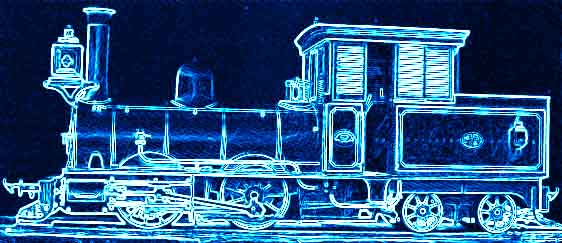
The Johore Wooden Railway

In 1866, the Maharaja of Johore visited England and witnessed some of the early railways. On his return he decided that he wanted his own railway and it was decided that it would be built from New Johore (now Johore Bahru) towards Gunong Pulai, some twenty miles to the north west, where it was planned to build a sanatorium and hill resort due to the cooler temperatures.
Due to the plentiful supply of good quality wood
nearby (Johore teak was considered to be the finest of its kind) the rails were
to made of wood, which had already proved to be acceptable elsewhere. The
cross-section of the rails was to be 6” x 4”, made from 10 feet scantlings,
and they would be fixed on round sleepers, six and a half feet in length,
bearing slots of 6” x 4”, set on edge and keyed in by two wooden wedges
driven against each other. The rails projected two inches above the sleepers,
which were spaced three feet apart. The gauge was at first said to be 3 feet but
was later clarified as one metre, being chosen as suitable following that chosen
for light railways to be constructed in India from 1872. The sleepers were
embedded in the earth “as the country could not afford stone ballast”. 90
tons of timber was used per mile of track.
According to the Singapore Daily Times of 24th
July 1869 His Highness, the Maharaja of Johore “inaugurated the Johore Railway
by turning the first sod of the line at New Johore in the presence of a small
gathering of Europeans and Natives. The first section will be an experimental
one of 18 miles in the direction of Gunong Pulai”. The Singapore Daily Times
contained further reports on 24th April 1872, 20th May
1873, 28th June 1873, 4th April 1874, 21st
August 1874 and 28th September 1875.
A report in mid-1873 stated that 6 miles of track
was completed and a further 2 miles nearly completed. A low-powered Chaplin’s
contractor’s locomotive was being used for construction. The deepest cutting
was 42 feet. The proposed locomotive was a “Fairlie double bogie engine, which
was successfully used on the Ffestiniog Railway in Wales and well adapted to
steep gradients and sharp curves.” As yet I have found no record of such a
locomotive being delivered to Malaya, however in 1875 the Maharaja of Johore
purchased a locomotive second-hand from India. It was an Indian State Railways B
class 0-4-4T, number B27, 89 on the Rajputana State Railway, Dübs 742/1874. It
was later used on the construction of the Selangor State Railway line from Klang
River to Kuala Lumpur and was used on the opening train, being named Lady
Clarke. Despite a later collision, it survived to be taken into FMSR stock in
1901. It is possible that it was used on the Johore Wooden Railway.
An 1875 report stated that 10 miles was complete,
including sidings, and part of the line was already in use, passing estates and
plantations on the way – whether or not it served any of these is not known.
There were no further reports until 1889 when it was said that the line had been
closed for some time after the locomotive had fallen into a hole and been
abandoned because white ants had eaten the track!
Page created 5th September 2004
Last updated 30th June 2015.
This page has been visited times.